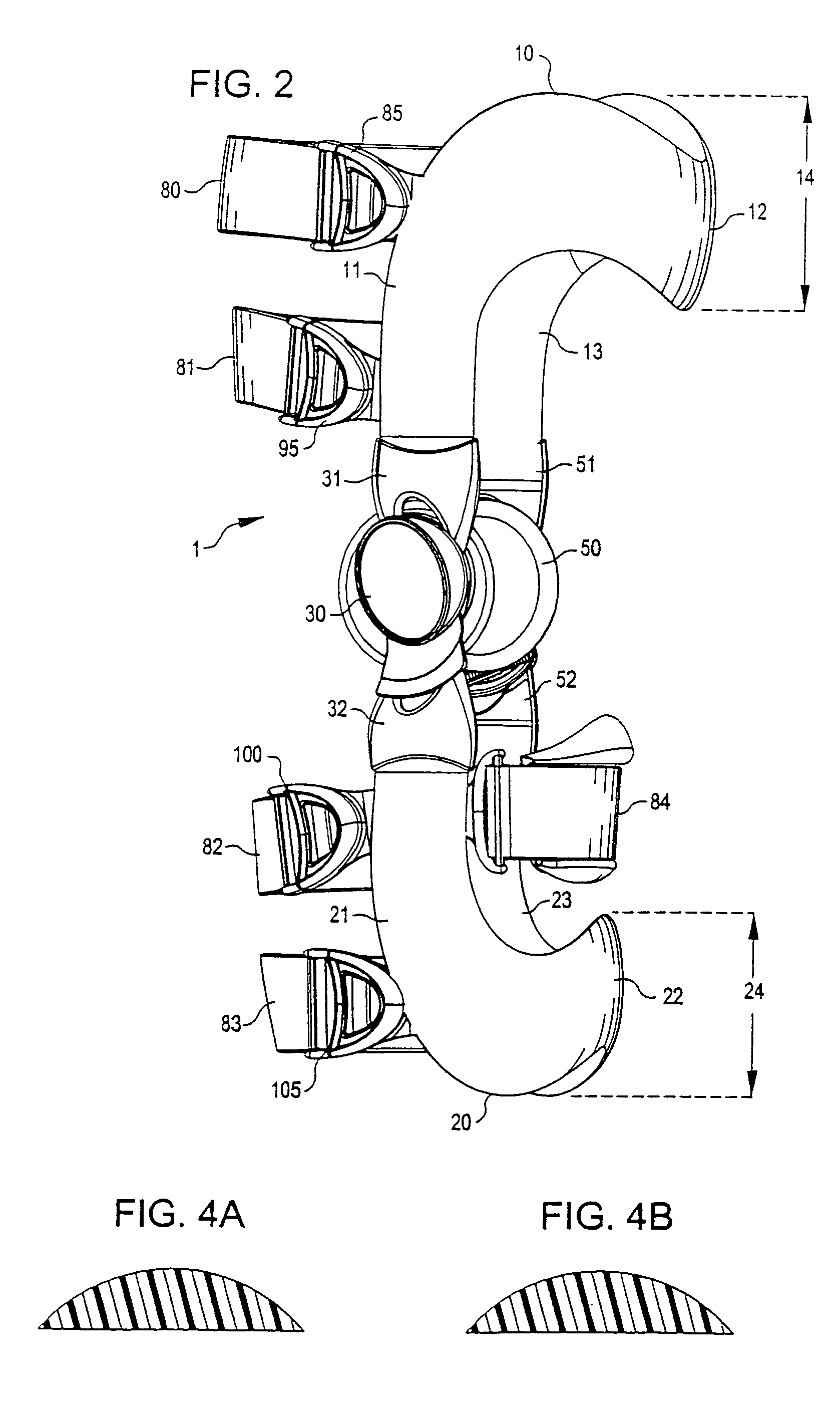Anatomically designed orthopedic knee brace
an orthopedic knee brace and anatomically designed technology, applied in the field of improved orthopedic devices, can solve the problems of limiting the usefulness of existing knee braces, unable to accommodate and adequately control the full range of motion of the knee, and affecting the ability of the knee joint to heal, so as to achieve the effect of new and effective orthopedics
- Summary
- Abstract
- Description
- Claims
- Application Information
AI Technical Summary
Benefits of technology
Problems solved by technology
Method used
Image
Examples
Embodiment Construction
[0053]The orthopedic knee brace in accordance with the present invention provides an apparatus for accurately prescribing the anatomical motion of the human knee. Anatomical tracking, when used with bracing, protects the knee and reduces stress on the anatomical parts of the knee, particularly the ligaments and the articular surfaces.
[0054]The orthopedic knee brace in accordance with the present invention prescribes movement of the knee joint in three dimensions and in six degrees of freedom simultaneously. The orthopedic knee brace actively prescribes asymmetric three-dimensional anatomic motion between a femur and a tibia during flexion and extension of a wearer's leg. The orthopedic knee brace actively prescribes flexion and extension, abduction and adduction, internal / external rotation, anterior / posterior translation, medial / lateral translation and proximal / distal translation between a femur and a tibia of a wearer's leg. The orthopedic knee brace permits natural movement of the...
PUM
 Login to View More
Login to View More Abstract
Description
Claims
Application Information
 Login to View More
Login to View More - R&D
- Intellectual Property
- Life Sciences
- Materials
- Tech Scout
- Unparalleled Data Quality
- Higher Quality Content
- 60% Fewer Hallucinations
Browse by: Latest US Patents, China's latest patents, Technical Efficacy Thesaurus, Application Domain, Technology Topic, Popular Technical Reports.
© 2025 PatSnap. All rights reserved.Legal|Privacy policy|Modern Slavery Act Transparency Statement|Sitemap|About US| Contact US: help@patsnap.com



